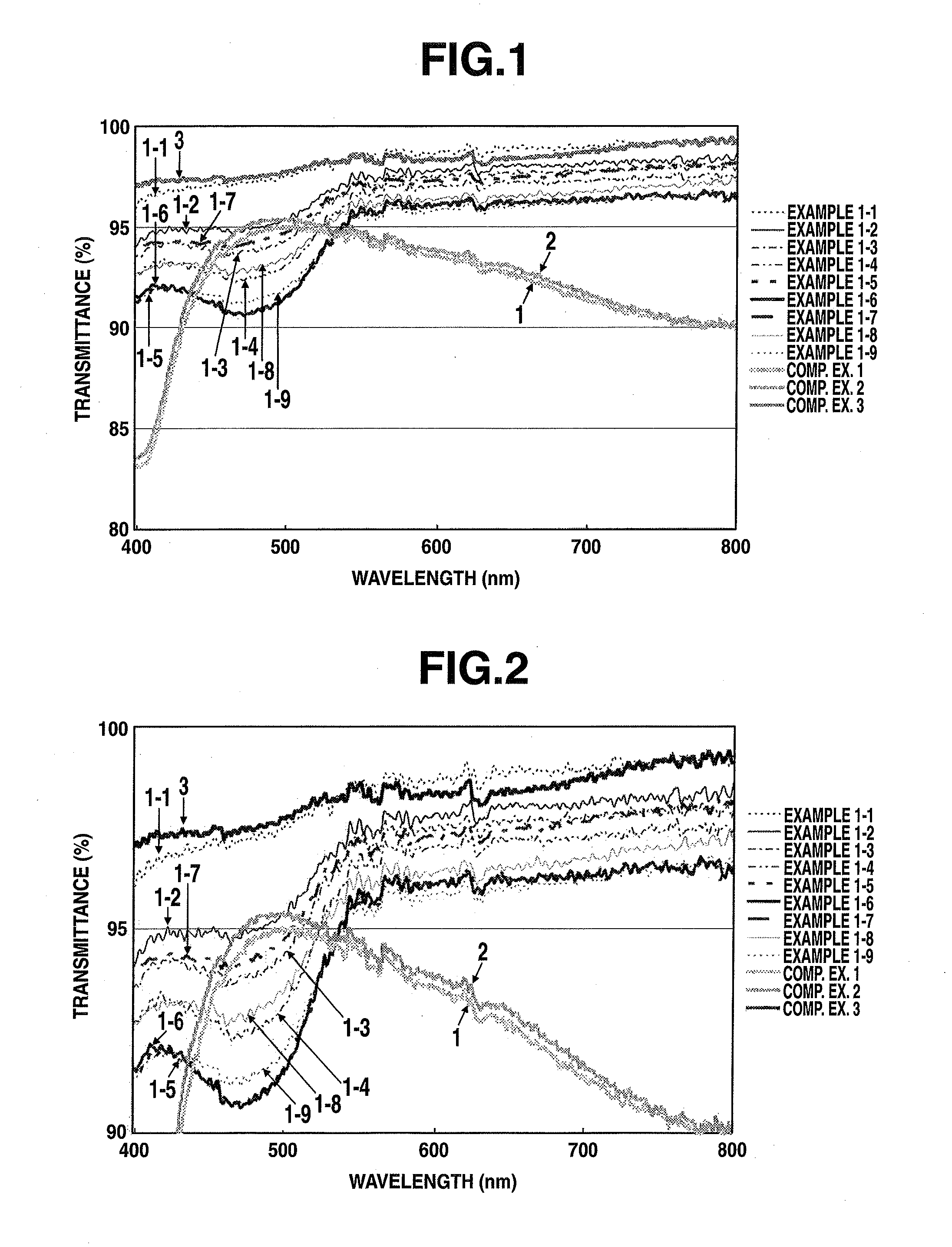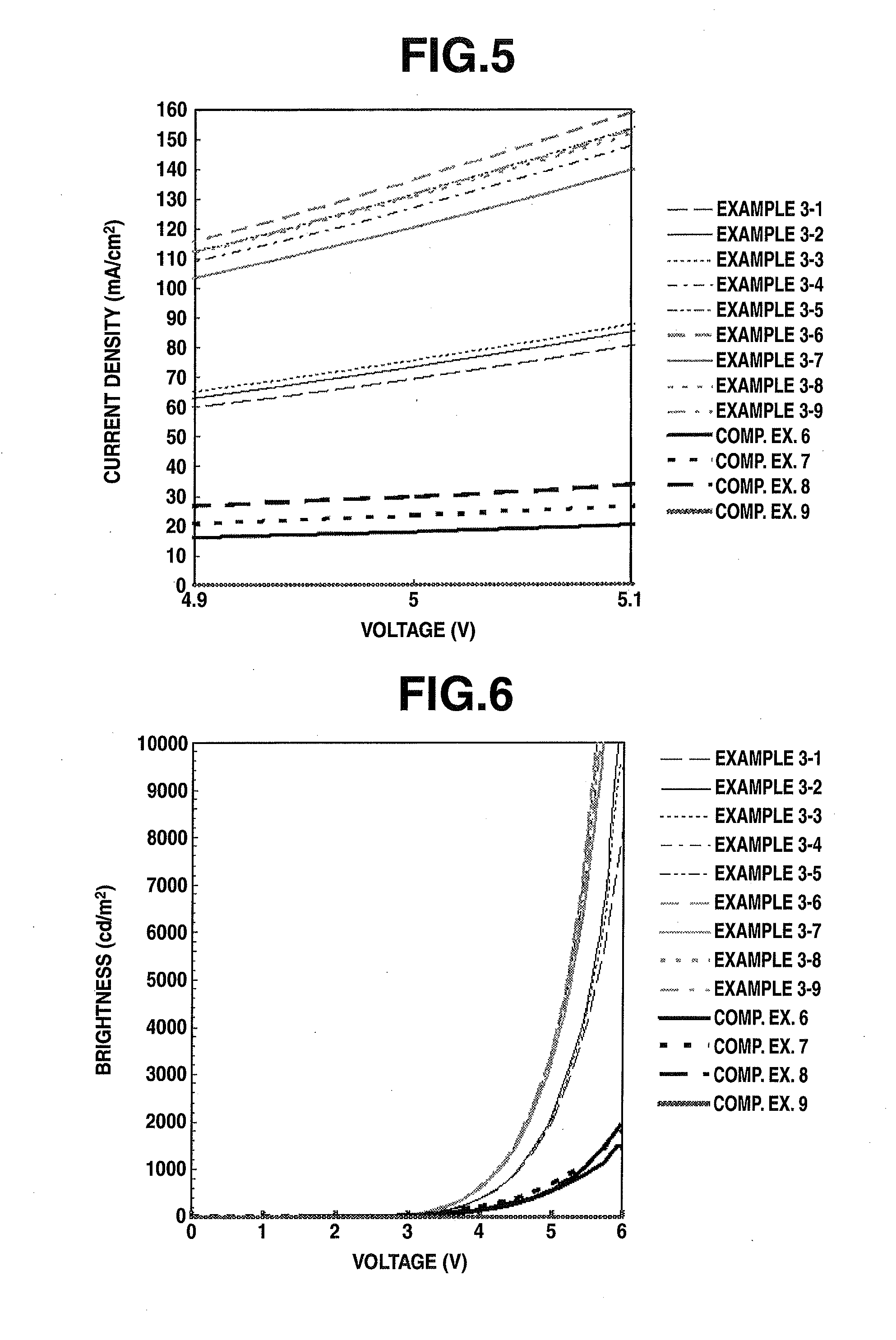Charge-transporting varnish
a charge-transporting varnish and charge-transporting technology, applied in the direction of electrically-conductive paints, conductors, non-metal conductors, etc., can solve the problems of reducing the color purity and color reproducibility of organic electroluminescents, major obstacles to the stable production of organic el devices, and reducing the driving voltage. , to achieve the effect of enhancing light extraction efficiency, reducing the driving voltage and high transparency
- Summary
- Abstract
- Description
- Claims
- Application Information
AI Technical Summary
Benefits of technology
Problems solved by technology
Method used
Image
Examples
synthesis example 1
[0112]The NSO-2 used in the working examples of the invention and the comparative examples was synthesized by the following reaction, based on the description provided in International Disclosure WO 2006 / 025342.
[0113]That is, 4.797 g (14.36 mol) of perfluorobiphenyl, 4.167 g (30.15 mol) of potassium carbonate and 100 mL of N,N-dimethylformamide were successively added to 11 g (31.59 mmol) of thoroughly dried sodium 1-naphthol-3,6-disulfonate, and the reaction system was flushed with nitrogen, following which the mixture was stirred for six hours at an internal temperature of 100° C.
[0114]The system was allowed to cool to room temperature, then an additional 500 mL of N,N-dimethylformamide was added and stirring at room temperature was carried out for 90 minutes so as to re-dissolve the NSO-2 that had precipitated out following the reaction. After stirring at room temperature, this solution was filtered to remove potassium carbonate residues, then concentrated under reduced pressure....
example 1-1
[0120]The N,N′-diphenylbenzidine (abbreviated below as “DPBZ”; from Tokyo Chemical Industry Co., Ltd.) of formula [1] below was recrystallized from 1,4-dioxane, then thoroughly dried in vacuo. Next, 0.244 g (0.726 mmol) of the vacuum-dried DPBZ and 0.246 g (0.272 mol) of NSO-2 were dissolved in 8 g of 1,3-dimethyl-2-imidazolidinone (abbreviated below as “DMI”) under a nitrogen atmosphere. Then 12 g of cyclohexanol (CHA) and 4 g of propylene glycol (PG) were added to the resulting solution, followed by stirring, thereby preparing a charge-transporting varnish (solids content, 2.0 wt %).
[0121]The resulting varnish was coated onto a quartz substrate with a spin coater, then dried at 50° C. for 5 minutes in open air and baked at 230° C. for 15 minutes, thereby forming a uniform thin-film having a thickness of 30 nm on the quartz substrate.
[0122]Here and in the examples that follow, quartz substrates were used after removing impurities on the surface with a plasma cleaning system (150 W,...
example 1-2
[0123]Aside from setting the amount of DPBZ used to 0.163 g (0.485 mmol) and using 0.229 g (0.253 mmol) of NSO-2 and 0.098 g (0.034 mmol) of phosphotungstic acid (Kanto Chemical Co., Ltd.) instead of 0.246 g of NSO-2, a uniform thin-film having a thickness of 30 nm was formed on a quartz substrate by the same method as in Example 1-1.
PUM
| Property | Measurement | Unit |
|---|---|---|
| Electric charge | aaaaa | aaaaa |
| Transparency | aaaaa | aaaaa |
Abstract
Description
Claims
Application Information
 Login to View More
Login to View More - R&D
- Intellectual Property
- Life Sciences
- Materials
- Tech Scout
- Unparalleled Data Quality
- Higher Quality Content
- 60% Fewer Hallucinations
Browse by: Latest US Patents, China's latest patents, Technical Efficacy Thesaurus, Application Domain, Technology Topic, Popular Technical Reports.
© 2025 PatSnap. All rights reserved.Legal|Privacy policy|Modern Slavery Act Transparency Statement|Sitemap|About US| Contact US: help@patsnap.com



